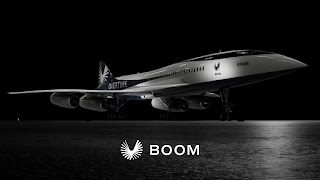Summary Reader Response Draft #3
There has been a growing interest in
supersonic flight technology in the past few years, especially with the
introduction of Boom Overture. Commercial supersonic aircraft can reach speeds
greater than Mach 1.2, surpassing the speed of conventional subsonic aircraft.
The purpose of these aircraft was to cut down on passenger travel time
significantly. Commercial supersonic travel, which was previously experimented
with using aircraft like the Concorde, is set to come back with Boom Overture
thanks to previous supersonic aircraft innovation. The Overture is a new
supersonic aircraft that aims to revive supersonic travel with updated
technology, improved efficiency, and a focus on sustainability. It can
transport passengers globally by flying at Mach 2.2. The aircraft consists of
the wings manufactured by Aernnova, Leonardo for the fuselage and wing box, and
the Symphony engine, which Boom developed.
The Symphony engine is one of the
critical features of the Overture's performance, which enables high-speed
travel while maintaining a low impact on the environment. The Symphony
structure includes a two-spool, medium-bypass turbofan engine with no afterburner
(Verdon, 2023). It generates 35,000 pounds of thrust. It incorporates advanced
engineering principles and aerodynamic features to enhance performance,
efficiency, and environmental sustainability. The Symphony Engine, which Boom
Aerospace developed, is specifically designed to help minimise the intensity of
sonic booms during supersonic flight.
The Boom Overture aims to address
environmental concerns associated with supersonic flight by incorporating
sustainable aviation fuels (SAF) and engines that consume less fuel. (Hardeman
& Maurice, 2021, p.8). The technologies used in the Overture aircraft, such
as the Symphony engine, are designed to reduce noise pollution and minimise
environmental impact.
Shockwaves are produced when an
aircraft exceeds the speed of sound and spreads outward in a cone-shaped
pattern. When these shockwaves hit the ground, they combine into a single
shockwave known as a "sonic boom.". A sudden, sharp rise in air pressure
produces a loud noise similar to an explosion, which defines sonic booms.
The Concorde was criticised for its
high fuel consumption and emissions, especially when travelling at high speeds.
At the same time, the potential for noise pollution caused concern because of
the sonic booms it produced. Despite its luxurious offerings, the Concorde
encountered challenges such as limited routes, declining passenger numbers, and
high operational expenses. Thus, this resulted in its retirement in 2003.
The Symphony Engine incorporates
cutting-edge aerodynamic features and innovative design elements to shape and
regulate shockwaves generated by the aircraft. This engine was developed to
minimise the intensity of sonic booms produced during supersonic flight and
achieved by manipulating the airflow using variable geometry components such as
adjustable nozzles and intake ramps. By effectively managing the shockwaves
produced during supersonic flight, the Symphony Engine can significantly reduce
the noise levels experienced on the ground. This feature is of utmost
importance as it addresses the issue of noise pollution and ensures that
supersonic travel remains environmentally sustainable and socially acceptable.
Controlling and minimising sonic booms
is crucial for regulatory approval for commercial supersonic flights in
overpopulated areas. By showcasing effective noise management capabilities,
aircraft equipped with Symphony Engines can meet the stringent noise
regulations set by aviation authorities. The Symphony and Overture were
designed to meet the FAA and EASA certification and airworthiness requirements,
including Chapter 14 noise levels and applicable emission standards.
However, the path to widespread
adoption of supersonic aircraft has its challenges. The Boom Overture and other
supersonic flight technologies are raising environmental concerns because of
their higher fuel consumption and carbon emissions. According to critics, the
trade-off between speed and sustainability is still open for debate. Stricter
laws, rewards for eco-friendly behaviour, and ongoing study into alternative
propulsion technologies are required to allay these worries. Boom Supersonic is
dedicated to collaborating with lawmakers and stakeholders to find practical
solutions to these problems.
In conclusion, the Overture aircraft
by Boom Supersonic is a revolutionary development in aviation, promising to
transform air travel with incredible speed, efficiency, and eco-friendliness.
The engine is a significant advancement in supersonic propulsion technology,
integrating modern design principles and materials. According to Boom
Supersonic (2022), the new supersonic era will enable them to reshape where and
how we utilise our time, giving travellers more opportunities to cherish life
and the people in it most.
References:
Image: https://boomsupersonic.com/overture
Verdon (2023). Boom's New Supersonic
Jet Just Got Closer to Hitting the Air.
https://robbreport.com/motors/aviation/boom-supersonic-major-steps-towards-flight-1234860127/
Boom Supersonic (2022). It is About
Time For a Bold New Era of Supersonic Flight.
https://boomsupersonic.com/flyby/its-about-time-for-a-bold-new-era-of-supersonic-flight
Hardeman & Maurice (2021).
Sustainability: the key to enable next generation supersonic passenger flight.
https://iopscience.iop.org/article/10.1088/1757-899X/1024/1/012053


Comments
Post a Comment